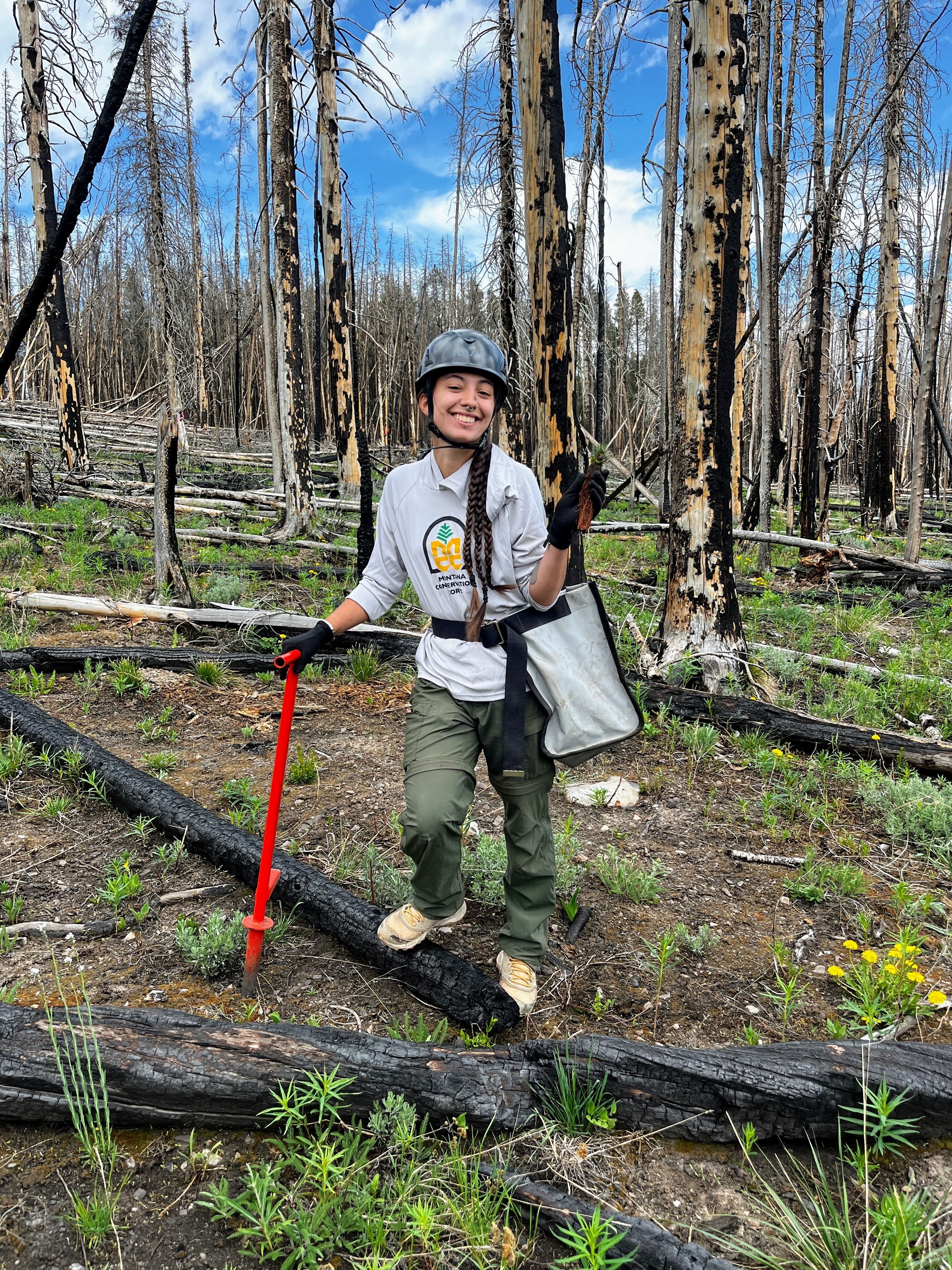
High in the mountains, in a place of bitter winds and chills, rain begins to tap on your helmet. This rain is a welcome surprise, dampening the soil and making your tool much more effective as you dig. You search for the perfect spot…no, the perfect home for your small but mighty seedling. Somewhere not too sunny but not too shady, where the seedling has room to stretch its future roots and branches. This seedling is special, representing a long-term conservation effort that gives hope for the continued existence of whitebark pines in southwest Montana.
In the culmination of a multi-year conservation effort, MCC’s AmeriCorps Interns and Fellows, serving with the Bureau of Land Management, have planted over 1,700 whitebark pine seedlings in a burn area in the Beaverhead Mountains. The seedlings used in this project were sourced from cones and seeds carefully collected by hand from a mother tree located just down the road from the planting site, representing a beautiful full-circle conservation effort.
This project is significant because the whitebark pine is considered a threatened species under the Endangered Species Act. This designation is due to a myriad of factors, including damage from mountain pine beetle and white pine blister rust, as well as the whitebark pine’s slow growth rate. Despite this, the whitebark pine plays a crucial role in regulating runoff and retaining critical snowpack, making it a keystone species that supports a diverse community of plants and animals. Proactive conservation efforts are crucial for ensuring the species’ long-term survival and maintaining overall ecosystem balance.
To ensure these special seedlings have the greatest possible likelihood of survival, MCC corps members, alongside BLM project partner staff, systematically scoured the terrain for the perfect locations for planting. The whitebark pine’s seeds are naturally dispersed by birds, who cache them for future retrieval. Forgotten seed caches eventually grow into whitebark pines. Without being planted in protected cache sites, these seedlings have little chance of surviving the harsh environmental conditions common in the whitebark pine habitat.
Each corps member meticulously identified and prepared each planting site, ensuring that the whitebark pine seedlings had a perfect micro-habitat. They strategically positioned each seedling to include a shadow to the east for protection from intense sun, and placed logs or debris to provide refuge during the bitter cold snaps. Although challenging, MCC AmeriCorps Intern Jaidyn found that it was “the most rewarding work I’ve done to date. Being able to replenish a species’ numbers in an area affected by fire was fulfilling and enjoyable.”
The successful planting of over 1,700 whitebark pine seedlings stands as a testament to the critical contribution of MCC AmeriCorps members. Their meticulous, on-the-ground efforts didn’t just plant trees; they directly enhanced the Bureau of Land Management’s capacity to
pursue vital, long-term conservation goals.
“As an AmeriCorps member, I learned a new skill that I envision will assist me in future work,” said Jaidyn. This is the power of the AmeriCorps model: it mobilizes dedicated individuals through organizations like the Montana Conservation Corps, facilitates skills training, and allows agencies to tap into highly motivated individuals with the dedication to tackle labor-intensive and high-value conservation projects.

![[Image Description: Two MCC members are walking away on a rocky trail, carrying their packs, surrounded by burnt orange bushes. Through the haze in the background, there are a multitude of mountains, overlapping one another.]](https://cdn.firespring.com/images/7ba12407-5e3a-41c1-b4b4-f00aac9d37a1.jpg)




